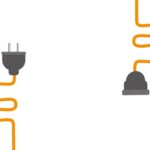Are you looking up and ahead?

About a decade ago I began telling bankers in this part of the world: you are probably looking at “peak bank branch” in the years to come. In which year will your branch network peak – and then begin to reduce in numbers?
Ten years ago no one really paid attention. It took another five years for the issue to become real for most bank CEOs and boards. Now, it is front and centre. Your bank has probably closed or merged branches, as customer visits fall and expensive locations and people are no longer needed.
Once upon a time having a large physical branch footprint was vital for most banks. It was a way to capture attention, footfall and transactions – and therefore, deposits, loans and fees. It was a way of growing market share. That was fine when you had to actually go to a bank in order to do banking, when bank branches were part of all our lives.
Things changed when the smartphone appeared, and the activity known as banking became something that collapsed into the palm of your hand. Time and place suddenly changed; it became possible to bank from your bedroom, the back of your cab, even the bathroom.
This change was great for customers, but uncomfortable and even scary for those inside the bank. It is not easy to mess with norms and habits that have been set for decades. It is not easy to contemplate headcount changes. It is not easy to plunge into unknown territory that’s shrouded with mist. It is understandable that most of those in bank boardrooms sat on their hands for a long time.
Fast-forward to 2020, when the global pandemic accelerated the change dramatically. Even those who still preferred going to branches were unable to do so for long periods. Both retail and corporate customers suddenly had to learn how to bank and pay digitally, using online platforms and mobile apps. Even the most reluctant late-adopters learned the ropes. And having learnt them, albeit kicking and screaming, they are on board. They get it, they see the convenience, they feel the possibilities.
And so in 2021 the chickens have finally come home to roost. Expect many more rationalisations of branch networks to occur, and many suddenly urgent accelerations into digital offerings by the latecomers.
Fast-rewind to ten years ago. Why was I so sure this was coming? It was an educated guess, as all good forecasts are. But the future was in plain sight, folks. The move to digital banking and fewer branches was already underway in more technologically advanced economies. Here, we knew we had peculiar demographics and the world’s youngest people. And we had experienced the dramatic uptake that a quick and convenient digital payments system like M-PESA could have.
Looking through some of my presentations of those days, I found these words: In African banking, certain battles cannot be lost: becoming more digital, more relevant for young customers, more easy to deal with, more inspiring to work for.
Here’s the point, In case you’re missing it.
In strategy, it really, really helps to be ahead of the curve. When faced with severe uncertainty, you want to start thinking differently way before others do. You want to run experiments and pilot schemes and learn lessons early. You want to be the one with a handle on emerging best practice. You do not want to be the one playing forced catch-up and finding out the new game already has its owners.
Even difficult issues like staff realignments benefit from early sighting. A thoughtful bank would have begun retraining and reskilling for the new world way back, and would have prioritized holding on to its good people, albeit in different roles. There is still a place for the bank branch, have no doubt. Transactions may collapse into bits and bytes, but many people will still need physical locations for certain types of advice and consultation. There will be many new jobs in banking, but the work will be around deeper advisory roles, data mining, digital user interfaces, customer experience, and the like.
The new world of banking will be all about digital speed and convenience, and deeper and more meaningful in-person experiences. A great bank will win on both. To be that winner, you needed to have been thinking about this way back. When the COVID digital acceleration hit, those who had started early found themselves well-positioned with systems, infrastructure and experience already in place.
Disruption is least dangerous and most rewarding when anticipated and embraced, not denied and resisted. The good strategist looks UP from current practice and targets, and looks AHEAD to see what’s coming. And then tries some new stuff out, before the rest of the pack.
(Sunday Nation, 19 June 2021)

Buy Sunny Bindra's new book
The X in CX
here »
Popular Posts
- The pause that saves usJune 8, 2025
- Where are you rushing to—your funeral?June 29, 2025
- How to spot a real thinkerJune 15, 2025
- Built the app, forgot the flowJune 22, 2025
- The first push is the hardestJune 1, 2025















